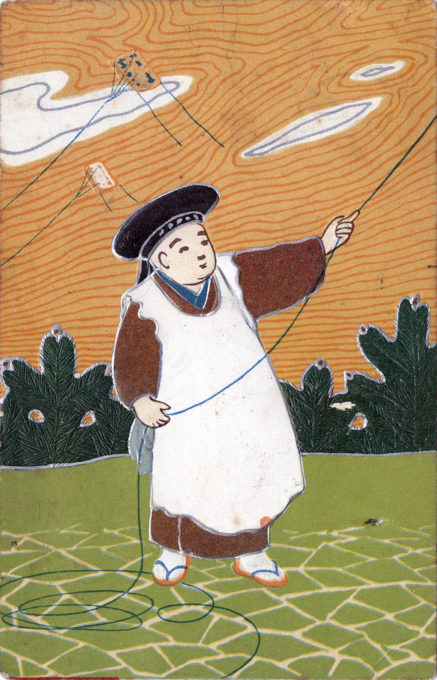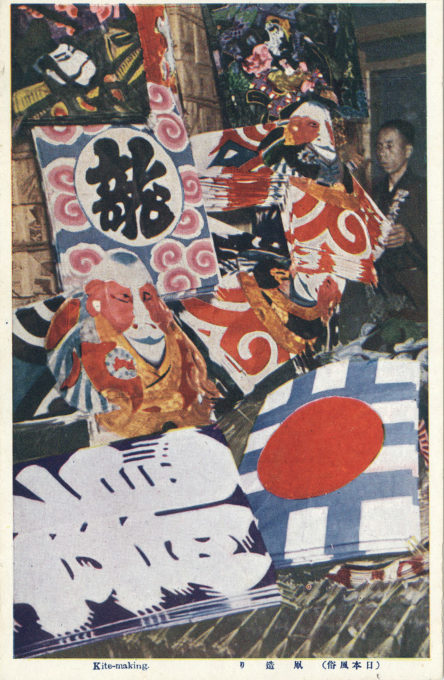See also:
Round kite (wanwan-dako) flying at Naruto, Shikoku, c. 1935.
Japanese Kites (~Dako), c. 1960.
“We think of kite flying as a pastime for children. Account must be taken, however, of the size of the Japanese kite, and the greater strength required to hold the string, before we judge their sport on the basis of what we know about kite flying.
“One good feature is that it brings the adults and children together in a common enjoyment. The kites are painted, and sometimes when one looks up to the end of the string he sees a goggled face staring down at him from the sky, with two tails hanging from it.”
– Beauty in Japan, Samuel Wainwright, 2003
![“Flaging [sic] kite on Kasagashira”, Nagasaki, c. 1910.](https://www.oldtokyo.com/wp-content/uploads/2019/05/scan0002-1-680x442.jpg)
“Flaging [sic] kite on Kasagashira”, Nagasaki, c. 1910. A Japanese dictionary dated 981 AD was the first to record the Japanese word for kite and used the characters for kami tobi, meaning paper hawk – which suggests that the first kites were bird shaped.
“About the time of the old New-year’s, when the winds of February and March are favorable to the sport, kites are flown; and there are few sports in which Japanese boys, from the infant on the back to the full-grown and the over-grown boy, take more delight.
Kite maker, c. 1930. There are about 130 different styles and types of kites in Japan, each region having its own unique shape. All are painted with bright-colored natural dyes, sumi (black ink) and constructed from washi paper (handmade rice paper) and bamboo – or where bamboo is difficult to grow, cypress wood is used instead. The framing is called the ‘bones’ and the paper covering is known as the ‘skin’.
“… The Japanese kites are made of tough paper pasted on a frame of bamboo sticks, and are usually of a rectangular shape. Some of them, however, are made to represent children or men, several kinds of birds and animals, fans, etc. On the rectangular kites are pictures of ancient heroes or beautiful women, dragons, horses, monsters of various kinds, or huge Chinese characters.
“Among the faces most frequently seen on these kites are those of Yoshitsune, Kintaro, Yoritomo, Benke, Daruma, Tomoye, and Hangaku. Some of the kites are six-feet square. Many of them have a thin tense ribbon of whalebone at the top of the kite, which vibrates in the wind, making a loud, humming noise.
“The boys frequently name their kites Genji or Heike, and each contestant endeavors to destroy that of his rival. For this purpose, the string, for ten or twenty feet near the kite end, is first covered with glue, and then dipped into pounded glass, by which the string becomes covered with tiny blades, each able to cut quickly and deeply. By getting the kite in proper position, and suddenly sawing the string of his antagonist, the severed kite falls, to be reclaimed by the victor.”
– The Mikado’s Empire, Vol. II, William Elliot Griffis, 1906



